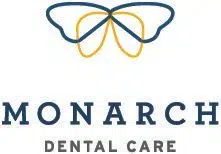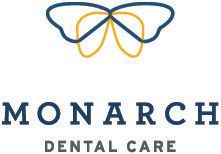
Treat Gum Disease and Preserve Your Healthy Smile
If you’re struggling with severe gum disease, a cutting-edge treatment called pocket reduction surgery may help. This procedure removes harmful bacteria and damaged tissue from the pockets around your teeth, reducing their depth and preventing further harm.
Our Prairie Village dentist breaks down how this surgery works and at what stage of gum disease they may recommend pocket reduction surgery. If you have any questions, call our office at (913) 362-4488.
What Is Pocket Reduction Surgery?
Pocket reduction surgery, also known as flap surgery or osseous surgery, is a dental procedure designed to treat advanced gum disease (periodontitis). When plaque and tartar build-up under the gumline, it creates pockets between your teeth and gums.
Over time, these pockets deepen and trap more bacteria, leading to inflammation and infection. If left untreated, this infection can damage the bone supporting your teeth and eventually lead to tooth loss.
Benefits of Pocket Reduction Surgery
Pocket reduction surgery offers several benefits for patients with advanced gum disease:
- Reduced Pocket Depth: By eliminating the deep pockets where bacteria thrive, the surgery helps prevent further infection and gum recession.
- Improved Oral Health: Removing bacteria and promoting healing significantly improves oral health and reduces the risk of future complications.
- Preserved Teeth: The procedure helps stabilize loose teeth and prevents bone loss, ultimately saving teeth from extraction.
- Enhanced Appearance: Reduced inflammation and swelling around the gums can significantly improve the aesthetics of your smile.
- Reduced Risk of Systemic Health Problems: Studies suggest that gum disease can be linked to other health issues like diabetes and heart disease. By controlling gum disease, pocket reduction surgery may contribute to better overall health.
Candidacy for Pocket Reduction Surgery
Pocket reduction surgery is not suitable for everyone with gum disease. Here are some factors a periodontist will consider when determining your candidacy:
- Severity of Gum Disease: The surgery is typically recommended for patients with moderate to severe gum disease where scaling and root planing (deep cleaning) haven't been successful.
- Overall Health: Underlying health conditions may require additional precautions or influence the suitability of the surgery.
- Dental Anatomy: The structure of your teeth and jawbone will be assessed to determine if pocket reduction surgery is the best action.
- Your Commitment to Oral Hygiene: Maintaining excellent oral hygiene after surgery is crucial for successful healing and preventing gum disease recurrence.
Pocket Reduction Surgery Procedure
Here's what happens during pocket reduction surgery:
- Evaluation and Anesthesia: Dr. Clark will first examine your teeth and gums to assess the severity of your gum disease. X-rays may be taken for a more detailed picture. Local anesthesia is then administered to numb the area around the teeth.
- Flap Creation: Small incisions are made in the gum tissue to create a flap, revealing the underlying bone and tooth roots.
- Cleaning and Debridement: Special instruments remove bacteria, tartar, and diseased tissue from the pockets and tooth roots. In some cases, the bone may also be smoothed or reshaped to promote healing and prevent future infection.
- Flap Reshaping (Optional): The periodontist may reshape the gum tissue for better aesthetics and easier cleaning.
- Suturing and Healing: The gum flap is then carefully stitched back into place to promote healing and reduce pocket depth.
Aftercare for Pocket Reduction Surgery
Following pocket reduction surgery, proper aftercare is crucial for optimal healing and preventing complications. Here are some key steps to follow:
- Pain Management: You might experience some discomfort and gum tenderness for a few days after surgery. Your periodontist will likely prescribe pain medication to manage this discomfort. Over-the-counter pain relievers like ibuprofen or acetaminophen can also be helpful.
- Bleeding: Minor bleeding is normal for the first 24-48 hours following surgery. Apply gentle pressure with gauze to control any bleeding.
- Diet: Stick to a soft diet for the first few days after surgery. Gradually introduce more solid foods back into your diet as tolerated. Avoid hot, spicy, or acidic foods that can irritate the surgical site.
- Oral Hygiene: Maintaining good oral hygiene is essential, even with discomfort. Gently brush your teeth using a soft-bristled brush and special toothpaste recommended by your dentist. Avoid flossing directly around the surgical site for the first week, but continue flossing in other areas.
- Rest: Get plenty of rest following surgery to promote healing.
- Swelling: Swelling is a common side effect, and applying a cold compress to your cheek can help reduce it.
- Medications: Take all medications prescribed by your periodontist as directed, including antibiotics if needed.
- Follow-up Appointments: Attend all scheduled follow-up appointments with your periodontist. They will monitor your healing progress and remove any sutures when necessary.
Cost of Pocket Reduction Surgery
The cost of pocket reduction surgery can vary depending on several factors:
- Geographic Location: Costs may differ based on the location of your dentist or periodontist.
- Dentist/Periodontist Experience: The expertise and experience of the surgeon can influence the overall cost.
- Complexity of the Case: More complex cases requiring extensive work on multiple teeth will generally be more expensive.
- Extent of Treatment Needed: The number of teeth treated and the type of anesthesia used will also contribute to the cost.
- Dental Insurance Coverage: Your dental insurance plan may cover some of the cost.
Frequently Asked Questions
Ease Symptoms of Gum Disease and Find Relief for Tooth Pain
If you’re tired of living with the discomfort and embarrassment of pocketing around your teeth, it’s time to take action. Pocket reduction surgery can help you regain confidence and improve your oral health.
Take the first step towards a brighter, healthier smile by calling our Prairie Village, KS, dental office today at (913) 362-4488. Our experienced professionals will guide you through the process and answer any questions.

